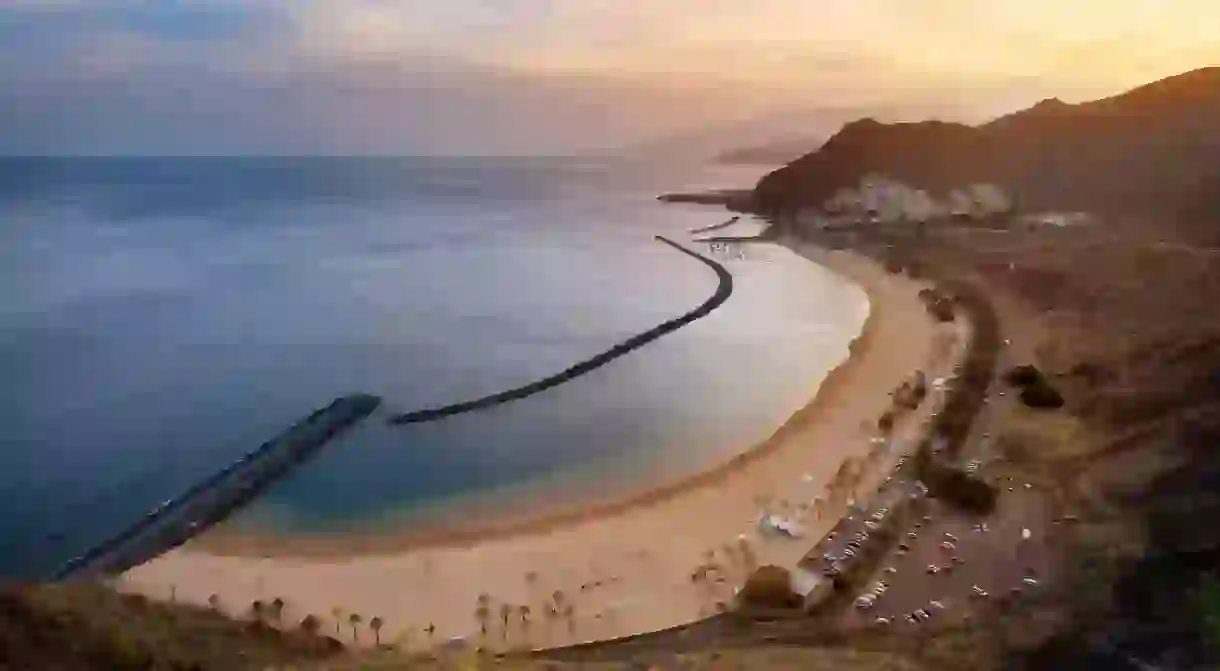Must-Visit Beaches in Tenerife, Spain

Tenerife is a top tourist destination thanks to its temperate climate, friendly residents and dramatic terrain. It’s the largest and most populous of Spain’s Canary Islands, and its rugged coastline offers approximately 66km (41mi) of beaches. Take your pick between secluded black sand coves, long golden shorelines and upbeat commercial beaches.
Did you know – Culture Trip now does bookable, small-group trips? Pick from authentic, immersive Epic Trips, compact and action-packed Mini Trips and sparkling, expansive Sailing Trips.
Playa del Duque

At the northern end of the immensely popular Costa Adeje, Playa del Duque is an ideal spot for a family day out. It is a well-maintained beach with proximity to many upmarket resorts. Tourists flock here for its fine light sand, many sunbeds and multitude of bars and restaurants. Playa del Duque is wheelchair-accessible, and several breakwaters make this stretch of the Atlantic a safe place to swim. It lies on the southwestern coast of Tenerife, and it’s easy to find parking nearby.
Playa de la Tejita
Though Playa de la Tejita is among the largest natural beaches in Tenerife, it’s the imposing Montaña Roja that makes this site most memorable. The huge red rock towers over the western end of the beach, providing a unique and dramatic backdrop. Unlike many of the island’s waterfronts, Playa de la Tejita remains a remote spot and has no buildings except for a small beach bar. It’s located on the southeastern side of Tenerife, just 3km (2mi) from the town of El Médano, and has a car park about 10-15 minutes on foot. Facilities are limited as are shaded areas, so it’s best to bring drinks and a parasol.
Playa de las Teresitas

Playa de las Teresitas is among the Canary Islands’ most popular beaches and is the main one in Tenerife’s capital, Santa Cruz. It’s both the longest beach in the northern part of the island and the only one with golden sand imported from the Sahara Desert. Complete with tall palm trees and calm water, it gives the impression of a Caribbean paradise. The beach is a 10-minute drive from the capital, and there are good public transport links from the city, too. There are also many food stalls serving traditional Canarian food.
Playa de Fañabé
Another gem along the attractive Costa Adeje, Playa de Fañabé is a tourist hotspot thanks to its many shops, food outlets, bars and leisure activities. If you don’t fancy the pedal boats, jet skis or parasailing, the golden sands and tranquil water provide a beautiful setting all year round. This beach is best accessed from the area’s resorts and hotels. There is also ample parking either along the nearby streets or in the Centro Comercial shopping centre’s car park.
Playa de Benijo

Few beaches are farther north in Tenerife yet still accessible to visitors. As such, Playa de Benijo is relatively secluded, with most visitors being locals who enjoy its black sands and dramatic views. Take in fabulous vistas of the Roques de Anaga formations and have a quick dip in the waves. However, remain close to shore and within the lifeguard flags, as currents here are very strong. The beach is well signposted, and it’s reachable by car from Santa Cruz through the Anaga Mountains. It has a car park, though the road to the beach itself is very winding. Plenty of exceptional seafood restaurants are also nearby.
Playa El Bollullo
Another of northern Tenerife’s most attractive natural spots, Playa El Bollullo invites you to soak up the sun along its 300m (984ft) of volcanic sand. It’s surrounded by steep green cliffs, and the waves here can reach several metres in height. Subsequently, it’s strongly advised to pay close attention to the lifeguard flags and only enter the turquoise water if you are a proficient swimmer. Playa El Bollullo is close to Puerto de la Cruz and is accessible on foot. Alternatively, there is a car park above the beach, but you’ll have to descend a steep path along the rocks to access the shore.













